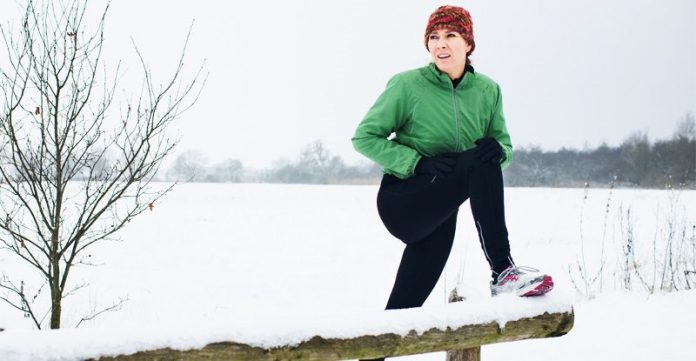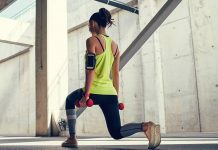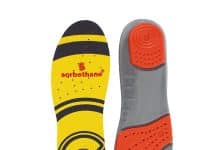Practicing running correctly in these winter months involves following some basic recommendations and knowing how to choose proper sports equipment.
With the arrival of the cold, wind, and rain, it is a little more expensive to continue with our outdoor training routines.
Gone are the days when high temperatures invited the most and least fans of running to go out for a run.
Running in winter becomes more complex, although many races, such as San Silvestre, are held at this time.
How to Dress to Train in Low Temperatures
The secret, in order not to abandon our outdoor training sessions in these winter months, is to know what sportswear to wear on the coldest days and what recommendations to follow when dressing;
In this way, we can reduce the uncomfortable thermal sensation that low temperatures produce in our bodies and make the most of our workouts as it happens in the warmer months.
Entering Temperature / Losing Temperature
Choosing the most suitable clothing for training requires first knowing how the human body works. Our body behaves like a ‘machine’; to work correctly, it must maintain a balance in many aspects, including body temperature.
Our body uses the thermoregulation mechanism to maintain an optimal body temperature between 36 and 37 °. This process balances the temperature that “enters” and the one that “leaves.” T
The overexertion to which we put our muscles when we run more or less long distances of several kilometers leads the organism to increase its body temperature and raise our thermal sensation from outside ( even with low temperatures).
For all this, a correct selection of the fabrics and sports garments we will wear is essential in these winter months. In this way, we will avoid the thermal sensations of excessive heat and cold that can lead us to reduce our physical performance and health.
The 10-degree RuleRules ruleRulefundamental consists of dressing as if it were ten degrees higher outside; although starting to roll, we feel cold, and this sensation will only last a few.
In the long run, wrapping up with excess clothing will only generate discomfort and physical discomfort from perspiring more.
Security and Visibility
We know days are shorter in winter; we must adapt and take the necessary security measures if we go out in the early morning or the late afternoon/evening.
Since most winter sportswear is made with dark colors, we must choose that at least these garments have reflective materials that help us see in the dark by other users of the road or route through which we train.
Another solution to make ourselves more visible is to wear colored sneakers; in this way, we can avoid accidents that put our health at risk.
Quality to Quantity in Technical Clothing
If in these months that the cold lasts, we want to continue improving our physical condition and personal brands, we must be aware of the fabrics that we wear in our sports garments;
These should limit the loss of body heat and fight against the cold, wind, and humidity that prevail in these months. Only in this way will we be able to continue getting the most out of our training sessions regardless of the weather conditions outside.
Technical Fabrics
First, these fabrics or fabrics are so-called because they are fibers, threads, or materials made of fibers with high thermal or mechanical resistance.
– When choosing fabrics for our sports garments, we must avoid cotton and nylon directly on the skin (these fabrics will make us sweat more and will not insulate us better from the cold).
– Although, later commercially, the marketing department of each sports firm changes its name, the best fabrics for training in adverse weather conditions are Thermolite (the best fiber on the market due to its low weight and maximum insulation from the cold), GoreTex (This system garment uses a waterproof sealing system in the seams) and Polar (high-density fabrics that achieve good insulation thanks to their ability to retain a large volume of air within the filaments of the garments).
Dressing in layers
This shape is best for running in cold temperatures and for maximum comfort. The system is simple: wearing one piece of sports clothing over another (such as an onion). This way, we will form a small microclimate to protect our body from sweat and adverse conditions (cold, rain, wind, or snow) to avoid feeling uncomfortable during the race.
The temperatures and weather conditions of the day will determine the number of layers we will have to wear to train. Thus, the lower the temperature, the higher the number of layers we will need to wear to control the excessive heat loss from our body and, in some cases, the entry of external humidity.
For the layering system to be helpful and practical, we recommend selecting garments so that some can be unbuttoned or removed.
There are three primary layers in this system:
The First Layer, or Inner Layer
They were also called ‘first skin.’ Its function is to keep moisture away from the skin to prevent our body from getting cold. The garments must be made of non-absorbent synthetic fibers (polyester, polypropylene, or color fiber).
The main characteristic of these fibers is that they are cheap and dry fast (in Thermolite polyester fibers, each filament is hollow, so each yarn filament is an insulator).
In the first layer, the most advisable thing is to dress in tight garments (without being uncomfortable), prevent the wind from penetrating between the different layers, reaching our skin, and lowering our body temperature. Within this layer are Technical shirts, tights, and thermal gloves garments.
The Second Layer, or Insulation Layer
Its function is to insulate thermally and trap cold air from outside. Thanks to these garments, the heat generated by our body is retained (thus preventing its cooling), and it favors the evacuation of excess moisture.
This layer’s importance lies in using insulating materials that, even when wet, maintain their insulating and breathable properties intact.
Synthetic fibers ( polyester ) and natural fibers ( wool ) are the ones that best perform this function. To this second layer belong the clothes of Polar linings, hats, socks, or ‘windbreaker’ vests (Windstopper).
The Third Layer or Layer of Protection
The function of this outer layer is to protect us from three essential elements: external humidity (keeping us dry from rain and snow—impermeability), external wind (thus avoiding the feeling of cold), and sweat (allowing its evacuation if the previous layers cannot retain it).
This outer layer must be as breathable as possible since if sweat soaks the clothes, it can cause discomfort during training. We can even go into hypothermia when we cool down (the ideal for these upper-body garments, which include openings under the armpits in their design to allow better ventilation of interior moisture).
For this layer, sportswear can include windbreakers, jackets with waterproof membranes, pants, gloves with waterproof membranes, or softshells (a mixture of fleece and windbreakers).
Technical Clothing for Running in Low Temperatures
The secret to training at low temperatures is discovering the proper clothing. In principle, these clothes must limit the loss of body heat and fight against the aggravating factors of cold, which are wind and humidity.
Wet garments make us cold throughout the training, and we get sick, losing our regularity in physical work. Many times, we wrap ourselves too much and perspire.
Read Next – Best Waterproof Walking Shoes For Women
Limit Heat Losses
The head is an area of significant loss of body radiation. Our hair protects it first, and we will use a hat if it does not reach it.
Then, there is the trunk, the center of our body. We must store the body’s heat and let the moisture out of our sweat to protect it.
Dressing in layers
“Dress like an onion.”
Did the cold come to stay? … We advise you to wear technical and several sports clothing layers in training. Each layer has its significance and can be combined according to weather conditions and the intensity of physical activity to control the loss of heat from our body and, in some cases, the entry of external humidity. Staying dry is synonymous with being comfortable.
Read Next – The Best Socks to Prevent Blisters
We Have Three Basic Layers
Inner Layer:
We also called the first skin. Its function is to keep moisture away from the skin. The garments must be breathable and non-absorbent, preferably made of synthetic material. These garments are known as “compression shirts.” It is essential not to use cotton in the layer close to the skin.
Why? Because cotton is a natural fiber, it completely absorbs moisture from the body and takes a long time to dry. Synthetic fabrics dry fast. We hardly wear several layers to dress in summer, except in training in the rain. In this case, we can avoid the “first skin” or inner layer, going directly to the next layer, the middle layer.
Middle Layer:
This is the level of Insulation: Its function is to trap the cold air from outside and not allow it to reach the skin. As with the inner layer, synthetic fiber garments are recommended because they maintain their properties even when wet. We talk about the so-called divers or polar. These are lightweight and have freedom of movement.
These first two layers already allow air to be stored between garments. These layers are hot air and comfort the runner—a desirable option for being very comfortable when running is the winter windbreaker or “Windstopper” vest.
Outer Layer:
Climate protection. Extreme cold or rain. The first two layers have undoubtedly managed to maintain our body temperature. The third layer must insulate us from the outside if we talk about severe weather. The garment can have openings under the armpits to allow ventilation inside moisture.
Read Next – Fitness Training for Backpacking in Fitness
I Was Running in the Rain
Regarding the issue of rain. The layer must be waterproof to protect from rain, breathable to let moisture escape from the body through the space in the back of the garment or under the armpits, and windproof, which, in the case of waterproof jackets, they are. Waterproof clothing is not the same as water-resistant or water-repellent clothing.
The “water repellent” has an exterior treatment of the fabric that makes the water “slide” down the surface of the same and serves for a very weak rain or garúa.
The “waterproof” prevents the entry of water, but not completely. Usually, the water passes through its seams.
The “waterproof” garments have welded seams and waterproof sealed zippers or hidden zippers. In this case, the protection is waterproof.
Read Next – ALEADER Women’s Water Hiking Shoe
Cold Running Accessories
Dry-Fit Gloves and Hats
Very light. They protect from the cold but not too much.
Like all technical fabrics, they allow the passage of water vapor, avoiding condensation (sweat). They are warm but do not allow us to sweat.
The hat fits perfectly on the head. This avoids walking around correcting your position while running.
Gloves, on some models, have a pocket for car or house keys. They are very comfortable.
This equipment, including hats, gloves, and neck protection, allows you to go out with only an excellent technical shirt with short sleeves.
Tubular Neck – Buff
Excellent for protecting the neck. As long as our channel is protected, we can wear a short shirt in cold weather. The tubular neck is multipurpose, used as a hat or to cover ears, nose, and mouth.
The garment is a textile tubular made with elastic microfiber fabric and without seams. It is fast drying. This garment can be used as a hat to protect us from the sun in summer.
Windproof vest or Windstopper
To be effective, it must not be impermeable to water vapor to evacuate the moisture produced by sweat from the body. Some of these also have thermal power.
The classic material is microporous fabrics (micro-polar), which are waterproof and breathable. Be very careful when buying them. They must be running. What are their characteristics?
The front of the vest is made of a solid and warm microporous fabric. The back is made of very light material. Good running vests come inside, lined by a net-type mesh, which separates the vest from the lower garment, keeping temperature and avoiding moisture condensation.
Long Leggings
There are summer, mid-season, and winter. In men, when it is cold, there are no longer brave men who resist it.
We must note that they are made of a material that does not retain water. Many can be very warm, but when crossing a waterway on an adventure race, they must drain quickly to begin drying.
Conclude!
Dressed like this, we can run without losing body temperature and sweating enough to avoid keeping moisture and getting cold.
After training, we must change all our wet clothes, wrap ourselves well, and have something hot.
Read Next – Best Walking Boots For Women

















































